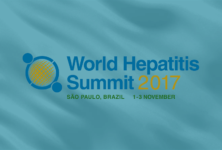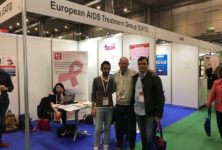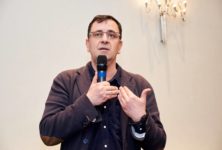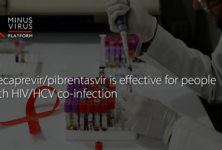Neither the government nor CSOs have taken up the services previously supported by the Global Fund
In January 2017, the Ministry of Finance of the Russian Federation rejected a request to allocate $1.2 billion over four years for the response to HIV, citing “a lack of federal funds.” The Ministry of Health had asked for the funds in order to implement the National AIDS Strategy 2017-2020. Approved in October 2016, this was the first national AIDS strategy ever developed in the Russian Federation.
The rejection of the funding request once again brought into question the ability and willingness of the Russian Federation to manage its serious HIV epidemic. According to the country’s Federal AIDS Center, as of September 2016 there were 1,087,339 cases of HIV officially registered, of which 233,152 had died. (Unofficial estimates put the number of people infected at about 1.5 million.) HIV prevalence was 0.6%. The number of new case is increasing by 10% annually. Less than a third of the people living with HIV are receiving antiretroviral therapy.
The Global Fund had been funding HIV programs in Russian Federation since 2003, investing approximately $276 million through grants implemented by three principal recipients (PRs): the Open Health Institute (OHI), the Russian Healthcare Foundation, and ESVERO, formerly known as the Russian Harm Reduction Network.
The grants implemented by OHI and the Russian Healthcare Foundation covered awareness and prevention services for the general population (e.g., information campaigns, training for medical personnel); prevention of mother-to-child transmission; prevention services for key populations (including men who have sex with men, sex workers, prisoners, migrant workers and people who inject drugs); and the provision of antiretroviral therapy, care and support for people living with HIV. Between 2004 and 2009, the programs managed by OHI provided prevention services to 106,000 people from key populations.
The grant administered by ESVERO focused exclusively on services for people who inject drugs. ESVERO was providing services from 2006 to 2014. By the end of that period, ESVERO was running up to 33 projects and was supporting annually up to 52,000 persons who inject drugs.
Funding phased out
Starting in 2010 or 2011, the Global Fund began to phase out funding to the Russian Federation. This was the result of two developments: (1) as a general policy across the entire portfolio, the Fund began to divert resources away from middle-income countries and towards low income countries with high disease burdens; and (2) the Government of the Russian Federation decided that it did not want to continue to receive support from the Global Fund. It wanted to become a donor instead.
GFO reported in May 2016 that the country coordinating mechanism was dissolved in 2013; that the Russian Federation pledged $60 million for the Global Fund’s Fourth Replenishment in 2014; and that the transition away from Global Fund financing was being done without any planning.
The only grant still operating today is one that was approved under the NGO rule in 2014, for which OHI is the PR. Under the NGO rule, certain upper-middle-income countries are eligible to receive an allocation for HIV only if they have a disease burden categorized as high, severe or extreme; and if they meet certain conditions, the main one being that the grant will be managed by an NGO (and not the government).
OHI’s NGO rule grant had a modest $10.9 million budget, and provided services to only a fraction of those in need. Given the limited support from the government and the progressively reducing donor funding, it was decided that the OHI grant should cease providing prevention services directly and should instead focus on community empowerment (see GFO articles here and here) – the idea being that empowered communities were more likely to defend their rights and advocate for services and increased funding from the government.
Current situation and future outlook
So, what is the current state of services for key populations in the Russian Federation? And what does the future hold?
There is a national AIDS program or sorts. It covers the provision of antiretrovirals for only one-third of the estimated population living with HIV. It includes a prevention program which covers HIV testing for pregnant women and for the wider population. The program for the wider population consists of street testing campaigns considered by most stakeholders to be a waste of money. There is no focus on the key populations. Nevertheless, in the opinion of Elena Zaytseva, OHI’s program director, the state has started to work towards improving the legal environment and has started to base its approaches on best practices in other countries.
Today, neither government nor civil society organizations (CSOs) have taken up the services previously supported by the Global Fund. This is partly because of limited funding. But it is also because the operations of international NGOs and even local CSOs in the Russian Federation are very restricted. Injection drug use and sex work are both illegal. Homosexuality per se is not illegal, but “promotion” of “non-traditional sexual relations” among people under 18 is illegal, under a new law adopted in 2013. Under the “law of foreign agents,” all local organizations funded by the foreign sources have to be registered as a foreign agent. Although the NGOs working in social and public health programs are technically exempt from this requirement, if the NGOs are doing something the government does not like, the government will not hesitate to use the foreign agents law against them. On top of that, both injection drug use and homosexual activity are highly stigmatized; and most advocacy activities are not tolerated by the government.
There are nine months remaining in the OHI grant. No further support from the Global Fund is foreseen.
It is not easy to evaluate the impact of the decision to invest in communities. Opinions of CSO leaders vary significantly, depending on their own experience, expertise and even perceptions. On the one hand, the development of a National AIDS Strategy can be seen as a positive outcome of advocacy by all stakeholders. The fact that the document exists means that the government recognizes the problem and is trying to find solutions. On the other hand, most stakeholders think that the document is of poor quality. It does not put forward a concrete plan for action. Mostly, it describes the epidemiological situation in 2016 and says what has to be done without detailing how.
The National AIDS Strategy mentions the various key populations, but only in the introduction. There are no indicators in the strategy document for tracking prevention activities specifically targeting any of the key populations. Therefore, communities suspect that there are no plans to implement prevention services for these populations.
In the opinion of Gennady Roshchupkin, technical support coordinator for the Eurasian Coalition on Male Health, “Community-based organizations exist and they are doing their best in raising awareness and building up the prevention services, but their number is so small that it is unlikely they would be able to influence the epidemiologic situation in the country.” He added that “the current government is not willing to cooperate with CSOs. They either ignore criticism or repress the people putting forward the criticisms.”
A leader from one of the communities, who preferred to remain anonymous, explained that community development requires a longer time than the OHI grant has allocated for it. He believed that the process of community empowerment in Russia is in its infancy and has not yet achieved any remarkable results. “We are still on a stage of looking for the leaders, who are ready to mobilize the followers and organize the campaigns.”
Irina Maslova, the head of the Coordination Committee in 2014-2016 (a body that partially replaced the CCM) and a leader of “Silver Rose,” a local network of sex workers, is more optimistic. She said that the results differ among the various communities and even across the different projects of the OHI grant, as the quality of the outputs depends on the input and enthusiasm of the project participants. “The sex workers community has taken maximum benefit from the OHI grant,” Maslova said. “Our street lawyers program is very successful. We have loads of examples where sex workers managed to protect their rights and strengthen their self-confidence,” she added. “Now they believe that one day they will change legislation.” On the other hand, Maslova said, “it is hard to talk about services for key populations when the country is still not able to ensure antiretroviral therapy for all persons living with HIV.”
The future of prevention services for key populations in the Russian Federation depends on numerous elements such as legislation, the politics and goodwill of the state, financial resources, and the commitment of the communities “to carry on the battle.” As Ms Maslova put it: “Only strongest will survive.”
By Tinatin Zardiashvili


 ПОИСК ПО САЙТУ
ПОИСК ПО САЙТУ  поиск по ресурсному центру
поиск по ресурсному центру 



